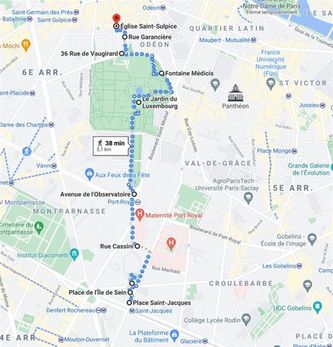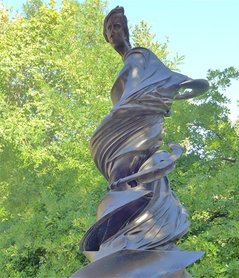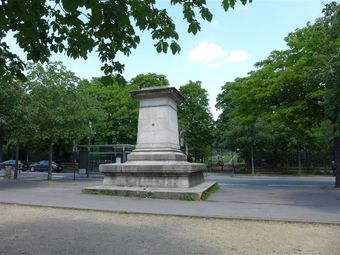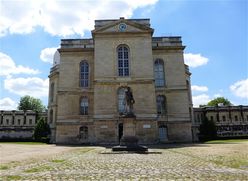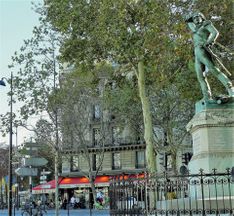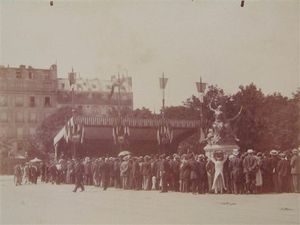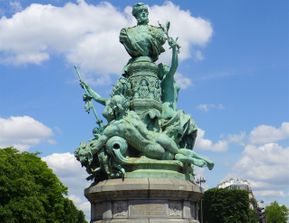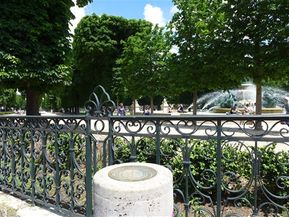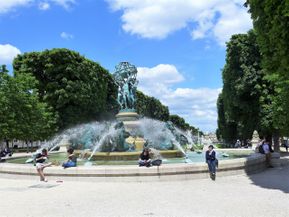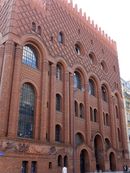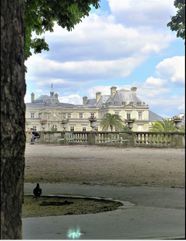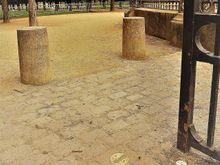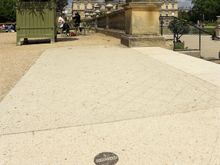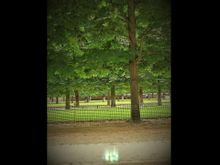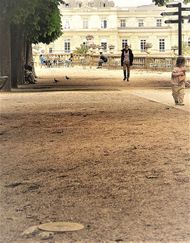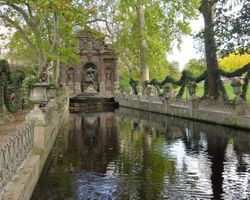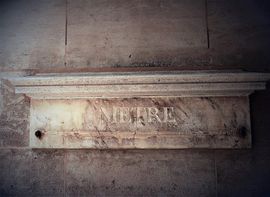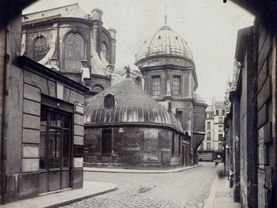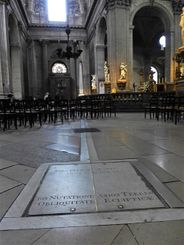Hora fugit - Un peu de Paris
Paris Meridian - From Observatory to Saint-Sulpice
Going out of the metro station Saint-Jacques, let’s walk toward place Saint-Jacques and then rue du Faubourg Saint-Jacques, one of the oldest roads in Paris once used by pilgrims on their way south to Santiago.
Observatory
We arrive at place de l’Ile de Sein, just in front of the small Observatory garden, where the virtual Paris meridian was crossing the empty pedestal of Arago monument, melted down during the Word War II.
There is much talk right now in France about removing monuments in memory of people involved in racism acts. On the contrary, Arago who worked actively for the abolition of slavery, would quite deserve getting back a new monument.
Alexandre Dumas was claiming that Arago was a man of "not only science, but also conscience; not only genius, but integrity».
Arago though is celebrated in many ways : the name of the avenue where we are; two bronze plaques made by Dutch artist Jan Dibbett on each side of the pedestal and lastly quite an impressive monument by Belgian artist Wim Delvoye in the garden.
From the Place de l'ile de Sein, we can see the white dome of the Observatory. From there, in 1676, the Danish astronomer Olav Römer made the first scientific determination of the speed of light, based on observations of the four satellites of Jupiter. The 1846 telescope used by Arago is still visible inside the dome.
To get a front view of the Observatory, we need to go around through the two streets that I further describe in the stroll in Montparnasse : rue du Faubourg Saint-Jacques and rue Cassini, from the name of a family line of astronomers who ran the Observatory for more than one century.
At the end of the rue de Cassini, we can see the Observatory through the gates. The building was built in 1667 under King Louis XIV by the architect Claude Perrault, best known for the colonnade of the Louvre. He is also the brother of Charles Perrault, famous author of fairy tales. The meridian bisects the Observatory oriented to the four points of the compass. The meridian is marked by a brass line inlaid across the white marble stone floor of the large room on the second floor.
The Paris meridian was serving French navigators as zero degree longitude, until Greenwich meridian was adopted in 1911 as prime meridian. Paris longitude is now 2°20 east. Not a small detail, if you ever have to find an old treasure located on ancient maps ... like in the story of Red Rackham's Treasure with confused Tintin and Captain Haddock. Comics books can be instructive indeed !
Although Paris meridian is no longer used to calculate longitudes, at least it can provide the true solar time. This reminds me the talking clock. As a child, I loved dialing the number of the talking clock. Maybe a long line of clock-makers let in my genes some obsession with exact times ... maybe it was the voice of the time keeper announcing the exact hour and minute: « At the 4th stroke, it will be exactly ... ».
Avenue de l'Observatoire
Let's now follow the Avenue de l'Observatoire.
In front of us there is the café Bullier though the famous largest dance hall in Paris the Bal Bullier was on the other side of the avenue where stands today the building of the university centre (CROUS).
The bronze statue of Marshal Ney with his sword out is located a few metres from the spot where Ney was executed for his support of Napoleon.
In A Moveable Feast, Hemingway is sitting at the Closerie des Lilas with a beer, watching the statue « alone there and nobody behind him and what a fiasco he'd made of Waterloo », and thinking that finally « all generations were lost by something and always had been and always would be. »
Looking for a possible trace of an Arago plaque, I braved the heavy traffic to reach the Place Camille Julian. There stands a monument to the memory of Francis Garnier, inaugurated on July 1898. This naval officer participated in the conquest of Tonkin under Napoleon III. He was killed in Hanoi, in 1873, beheaded by the Black Flags. His ashes, recovered almost a hundred years later, were placed in the monument. What a shame his participation in the sack of the Palace of the Emperor of China, but certainly a 34 year old lost boy too by the colonialism conquests ...
Anyway, after having checked there is no trace of Arago plaque, I braved back the traffic to go toward the gardens of Marco Polo, an explorer with more peaceful intentions...
Inauguration of the statue of Francis Garnier on 14 july 1898
Atget
(Musée Carnavalet)
In its end, the stroll in Montparnasse goes through this quiet garden forming a green tree lined extension of the Luxembourg garden.
At the corner of the garden and the rue d'Assas, I have found a milestone of the Méridienne Verte, at the level of the beautiful fountain of the Four Parts of the World. Here, no glory to colonial expansion, but a harmonious group of women representing the four continents carrying the celestial sphere in a single movement, created by Carpeaux.
Fountain of the Four Parts of the World
Atget- 1907
On the left along the Avenue de l'Observatoire, there is the eye-catching building of the Institute of Art and Archaeology, a red brick half-Oriental, half-Venetian palace like, built in the 1920s.
And after the Faculty of Pharmacy, the former Colonial School created in 1889 in a Moorish style forming as an odd counterpart to the statue of Francis Garnier...
Jardin du Luxembourg
We are now at rue Auguste Comte, where the Luxembourg garden opens up in an inviting space of lawns and trees.
I have walked through the Luxembourg garden so many times without even noticing the Arago plaques on the ground. (I have found six between the entrance and the central basin).
The Luxembourg stroll runs through the entire garden. Here, we will mainly follow the imaginary line of the Paris meridian up to the level of the Queens of France around the central basin. Then, we will head east of the garden to have a rest by the Medici fountain, which on my last visit was undergoing the final stages of an extensive restoration.
Medici Fountain
Jardin du Luxembourg
Atget (Musée Carnavalet)
Let's take the exit to rue de Vaugirard, where we will stop at number 36, where we can see a marble standard metre. It is the last original one installed between 1796 and 1797 to instruct people with the new unit of measurement, as decided in 1790 to be 10 millionth of the distance from the North Pole to the Equator, through the Paris meridian. That being decided, what remained, was to measure it. For seven years and in the midst of French Revolution, two astronomers Delambre and Méchain travelled the meridian between Dunkirk and Barcelona to precisely compute the meter (0.513 074 toise)...
Let's turn onto rue Garancière, from which we can see the back side of the church of Saint Sulpice.
Fountain – rue Garancière
Atget – 1900
(Musée Carnavalet)
Eglise Saint-Sulpice - Gnomon
Back side of the Church of Saint-Sulpice
Atget
(Musée Carnavalet)
The stroll in the garden of Luxembourg ends with a visit of the church of Saint-Sulpice, where there is a gnomon, which is an astronomical instrument. This gnomon was in fact installed to calculate the date of Easter each year.
How does the gnomon work? The sunlight was passing through a lens inserted in a small hole of the southern stained glass window. A disc of light was projected on the floor. When it intersected the brass line on the floor, it was true noon. The distance of the disc of light along the brass line can also provide the solstices and equinox; depending on the position of the sun, higher in summer or lower in winter. This is how the date of Easter could be determined, as corresponding to the first Sunday after the first full moon after the spring equinox.
The Paris meridian line going through the Observatory was used to obtain the longitudes and the true (solar) noon. It was replaced by the Greenwich prime Meridian from which the longitudes and the twenty-four time zones are now determined.
The Paris meridian line did not pass through the church of Saint-Sulpice. It was just a meridian line used to determine the true noon, equinoxes and solstices...
Texte / Photos : Martine Combes
Contact / newsletter:
